Posted on January 7, 2016
“This mission that our people burnt down”—Closing Ceremony in San Diego
On November 7th 2015, the Walk for the Ancestors reached its final destination at Mission San Diego after two months and what turned out to be over 780 miles of walking. 130 people joined together at dusk for the final ceremonies, including representatives from numerous Kumeyaay communities and reservations. Stanley Rodriguez from the Santa Ysabel reservation opened the gathering with a booming voice, speaking first in the Kumeyaay language, then translating to English.
“In front of me, here, are Ipai-Kumeyaay dancers from both sides of the border,” Rodriguez said. “We have come here today, to this mission that our people burnt down. Our people went to war with these people. And we still have our language, we still have our songs. We never let go. We are still native people, we are still part of this earth.”
“We’ve come here because this lady here, Caroline, has come from very far away, to bring attention to the plight of our people,” he continued. “To show that our spirit is strong. That we never forgot, we’ve never let go of who we are.”
“So, we’re going to sing these four songs. We welcome you into our land, the land of our Ipai, Tipai people. These songs are for you—we praise you, for what you have done.” As four Kumeyaay men began singing in unison with traditional gourd and can rattles, four Kumeyaay women were across from them, dancing in rhythm.
“We know what our people have gone through,” Stanley Rodriguez said after the songs were finished. “We know the things that have happened. But I just want to say this, coming from my heart: We are not victims. Victims are people who have lost. We have not lost. If we speak our language, we’re still resisting. If we sing our songs, we are still resisting. If we follow our traditional ways, we are still resisting. We have not been conquered. We have not been defeated.”
Walk leader and Tataviam descendant Caroline Ward Holland spoke to the giant circle, as dusk gave way to night. “When we started this walk, I was angry,” she said. “But my anger turned in to something positive, in the fact that we’re all here, today. Today I can stand here and say that it’s not just a bunch of individual California tribes anymore. It’s one band of coastal California Indians who feel the same way. Our people are not going to be disrespected again.”
“It’s been an amazing journey, and I have learned so much,” said Kagen Holland, who also walked the entire distance from Sonoma, CA to San Diego. “I thought this was just going to be me and my mom walking—but it turned into a movement.”
“All these missions that we’ve seen, none of them tell the truth about the history of what happened to our people, and it’s sickening,” Kagen told the crowd. “It’s ridiculous what they put out there for people to believe. Like that the Spaniards came here to help our people, that they came here with good intentions. No, they came here to conquer this land, and to steal our natural resources, and to use our people to build their nation.”
“What I want to see from all of these missions is for them to admit what happened, that they enslaved our people. Use words that our people know to be true: slavery, genocide. And I believe that all of these places need to be returned to the native peoples, as they said they were going to do. It’s not their land. It’s our land.”
“I hope that everyone here will continue to speak the truth to everyone that they know,” Kagen concluded. “I’ll keep walking, and I’ll keep speaking the truth, whatever the cost to me. Thank you all for being here, and showing your love and support. This might be the last gathering for the Walk for the Ancestors, but this movement is not over.”
As darkness set in and the stars began peeking out between clouds, others stepped forward in pairs and small groups to share songs and words of gratitude, kinship, and respect. Hand drums and rattles accompanied prayer songs in indigenous languages—Nahuatl, Lakota, Rumsen Ohlone, Kumeyaay.
The final ceremony of the evening was a traditional honoring and gifting of feathers to the walkers and supporters. Laughing Coyote, of the Mono tribe from the Sierras, and Corine Fairbanks, Oglala Lakota and American Indian Movement organizer, introduced themselves. Stepping into the middle of the giant circle, they invited everyone to come in closer for the honoring.
“What these people have accomplished is a really extraordinary feat,” Laughing Coyote said. “And it was done in a very peaceful way and a very loving way, as they walked all the missions from Sonoma all the way down through San Francisco, Santa Barbara, and to here. This is the end of that journey.”
“When we first heard of Father Serra being given sainthood, it was a real slap in the face to all native peoples, all over the country, all over California,” he continued. “I was waiting for someone to step up during this whole year, to really lead the way, and Caroline did that. She and her son did that. I cannot even begin to express the gratitude of our people to you Caroline, and your son, for the sacrifice that you made. But it’s not just a sacrifice, it’s also a blessing, a tremendous blessing that is going to last you a lifetime. And it’s going to transform you.”
“We’re going to bless these feathers, and present them to our people here,” Laughing Coyote said, explaining that the feathers are from his homeland in the Sierras, from the spirits of the land, not from him. “We’re going to pray really hard for these people, and ask the Creator to bless them for what they’ve done.” After blessing and gifting a feather to each of the walkers and supporters, surrounded closely by the whole crowd of people, Laughing Coyote sang a traditional healing song.
“Our elders, all of those medicine people from 20 years ago, from 30 years ago, they’re gone now,” Laughing Coyote said. “And we’re the ones that are left. This circle here, and our peoples. We have to carry that vision on, of what the Great Spirit intended for our lives. To carry on with our responsibilities, and with that dignity and pride— in who we are, and what our people are about.”
Corine Fairbanks asked everyone to close their eyes for a moment. “I want to ask you to think about your grandmother or your grandfather. Or your great aunt or your great uncle. Think about the closest relative that has passed on that you knew, that you loved, that you cared for, that cared for you too. When we talk about our ancestors, some of us have kind of a disconnect with that. But when you close your eyes and you think about the people that you have loved and have gone on before you, then you put a face to what ancestor means.”
“So, when you open your eyes, you can still see their faces, your loved one. Their smile, the stories they told you. And that’s why we’re here. That’s why we don’t want our ancestors to be forgotten. And they will not be forgotten. They refuse to be forgotten.”
“And remember, you will all be ancestors yourselves one day,” Fairbanks continued. “Our grandchildren that haven’t even been born, they need the stories of tonight. They need all of these stories. Because, you’re praying for them to be born in a better world, right? Right? So, if we want a better world, then we have to not become apathetic, we have to stop being complacent, we have to demand that there’s some changes that take place. We have to stand up, be involved, and walk part of this prayer in motion.”
“I want to give my deep respect and thanks,” she concluded. “And I want to thank all of you for being here. And please, please think carefully about it—and give our family, our relatives, each other, ideas on how to proceed and move forward.”
“This gathering isn’t an end, it’s another beginning,” Caroline Ward Holland told the group. “We’ll just keep turning the pages, until we make things right.”
We, the walkers and supporters, would like to hear from you—what are next steps for this movement? How can we make the changes that are needed? What do you have to contribute? What initiatives or actions are you taking that we may be able to support? — Contact us: walkfortheancestors [at] gmail.com or clhollandn3 [at] gmail.com
Special thanks to Richard Cano and Mike Moe for sharing your photographs to complement this report.

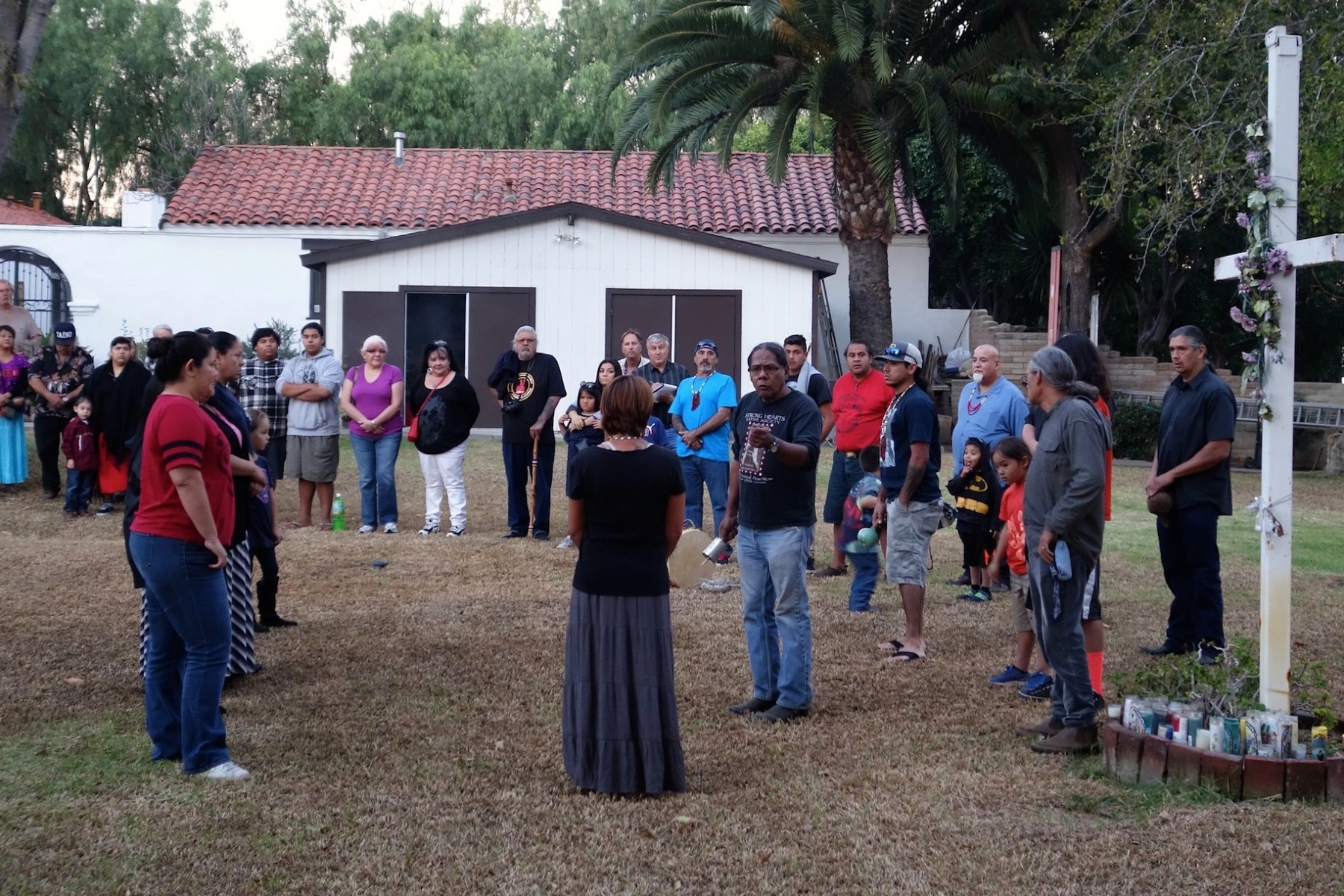
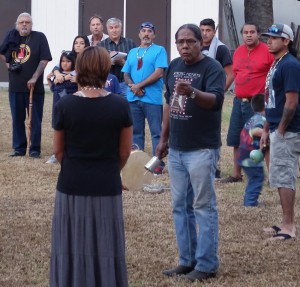

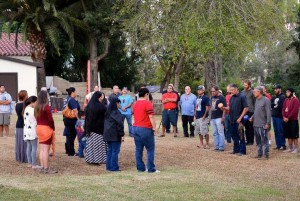
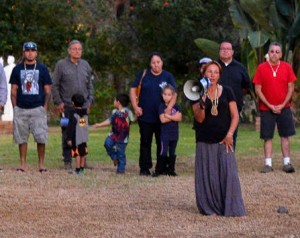
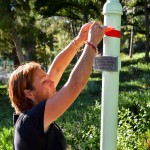
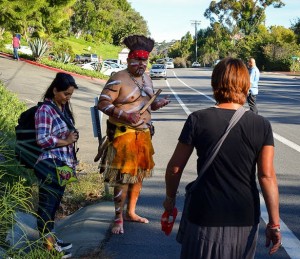
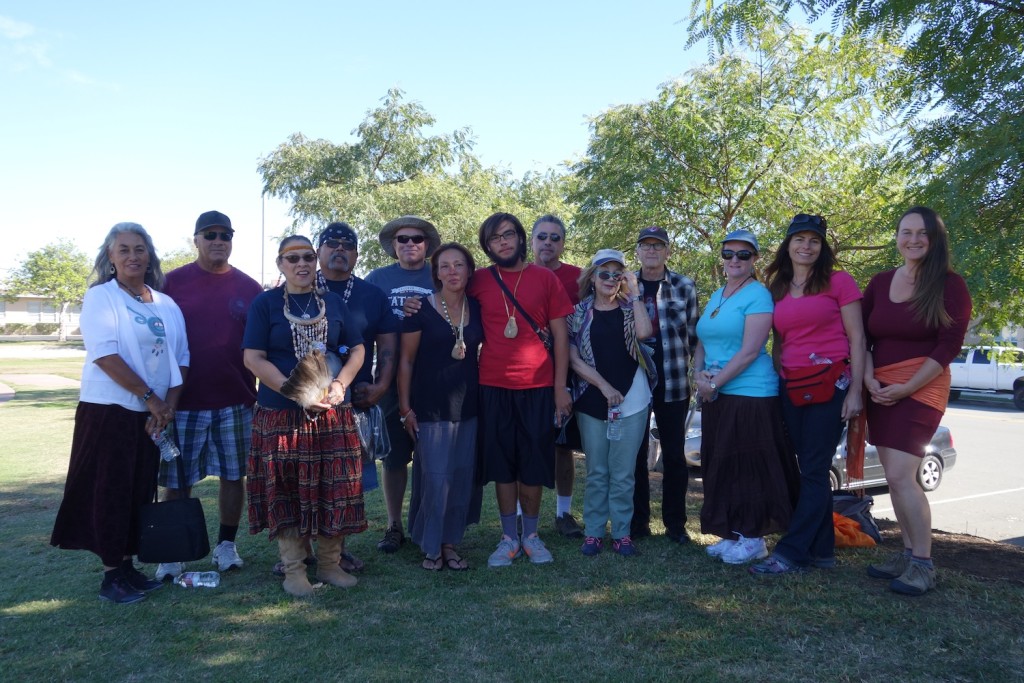

I love, respect, and thank you all that took part in one way or another! I love, respect and thank those two beautiful people whom without them this would never have happened! Caroline & Kagen , you are so awesome!